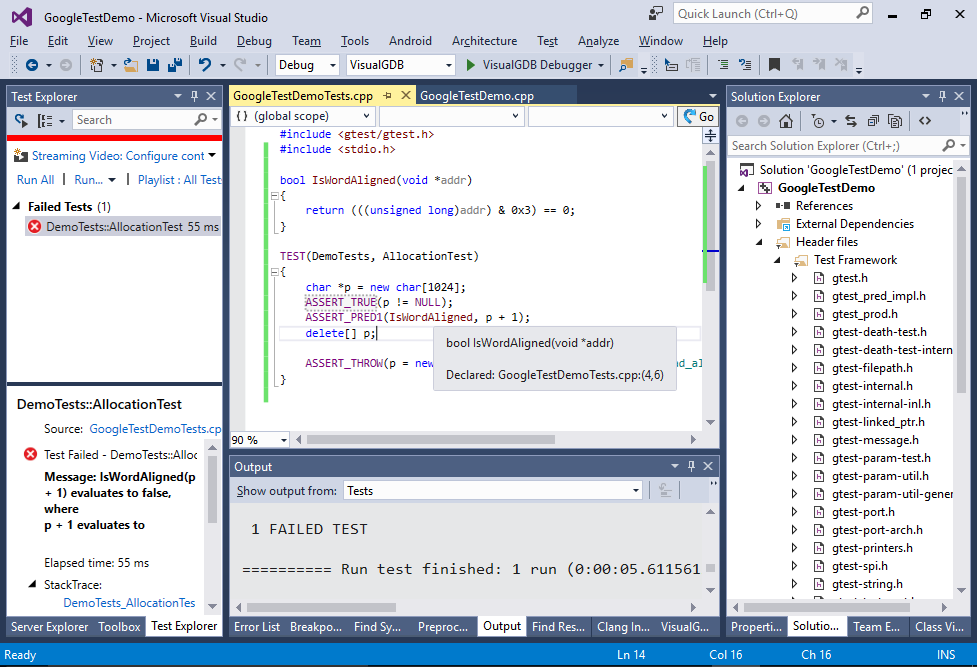Developing unit tests for Linux with GoogleTest
This tutorial shows how to use the GoogleTest framework to develop unit tests for Linux with VisualGDB. We will create a basic remotely built Linux project and will show how to use different GoogleTest assertion macros to test for various conditions.
Before you begin, install VisualGDB 5.2.
- Start Visual Studio and open the VisualGDB Linux Project Wizard:
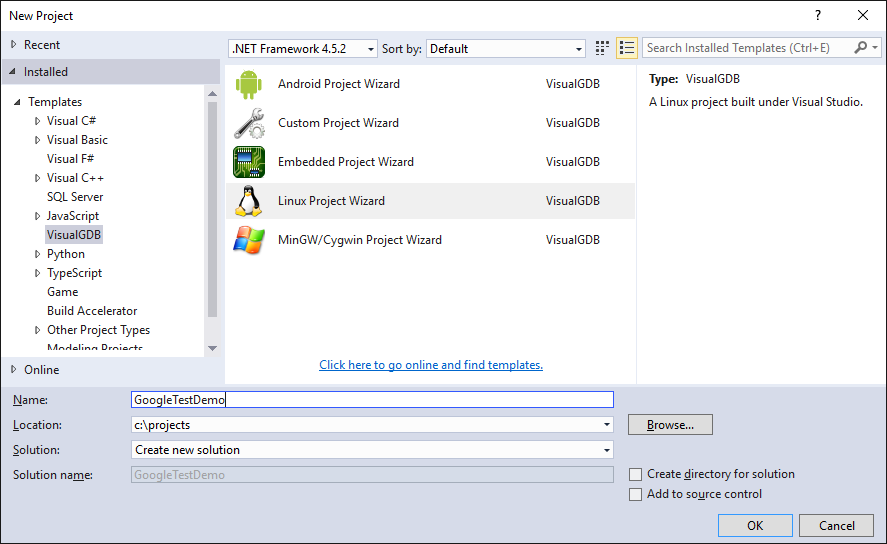
- Select “New Project -> Unit test project -> MSBuild”:
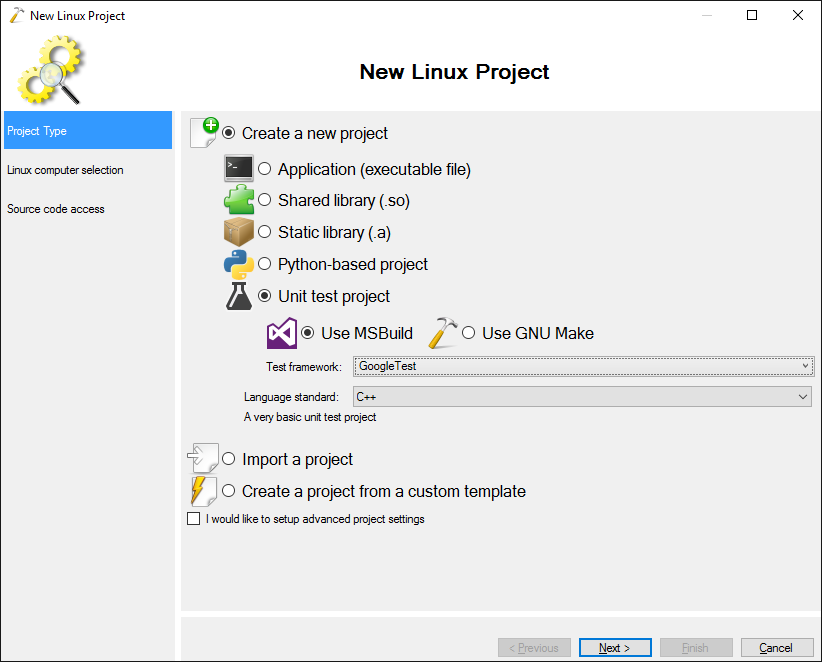
- Select the computer that you want to use for building. The steps described here will work for remotely built projects as well as for the projects built with cross-toolchains:

- Proceed with the default settings on the next page:

- Press “Finish” to generate the project. Build it via Ctrl-Shift-B and ensure that VisualGDB recognizes the sample tests generated by the wizard:
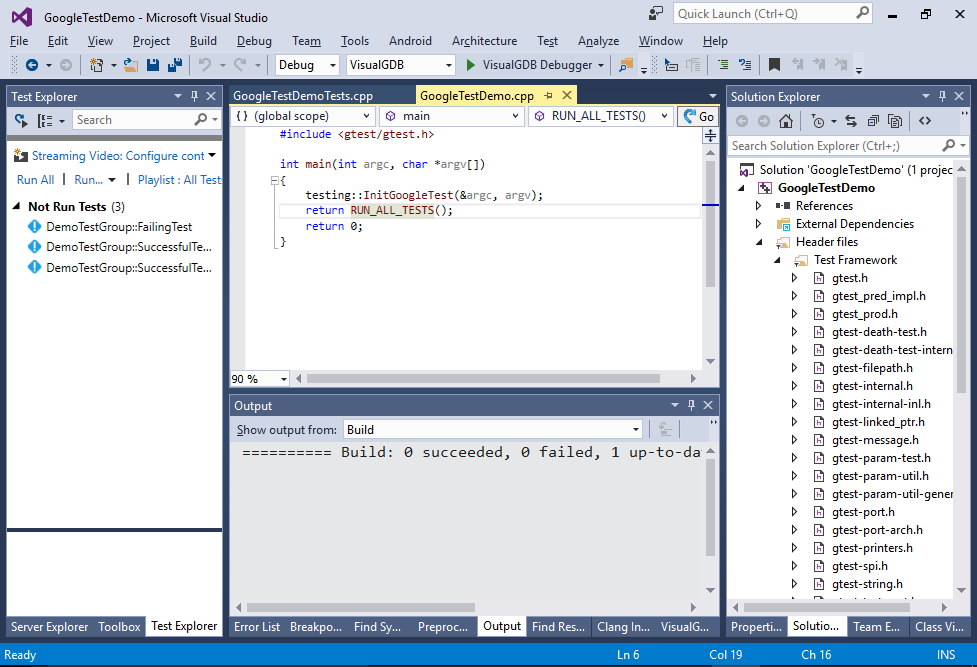
- Select Test->Run All to automatically launch the tests. Ensure that the FailingTest() reports a failure and the two other tests succeed:
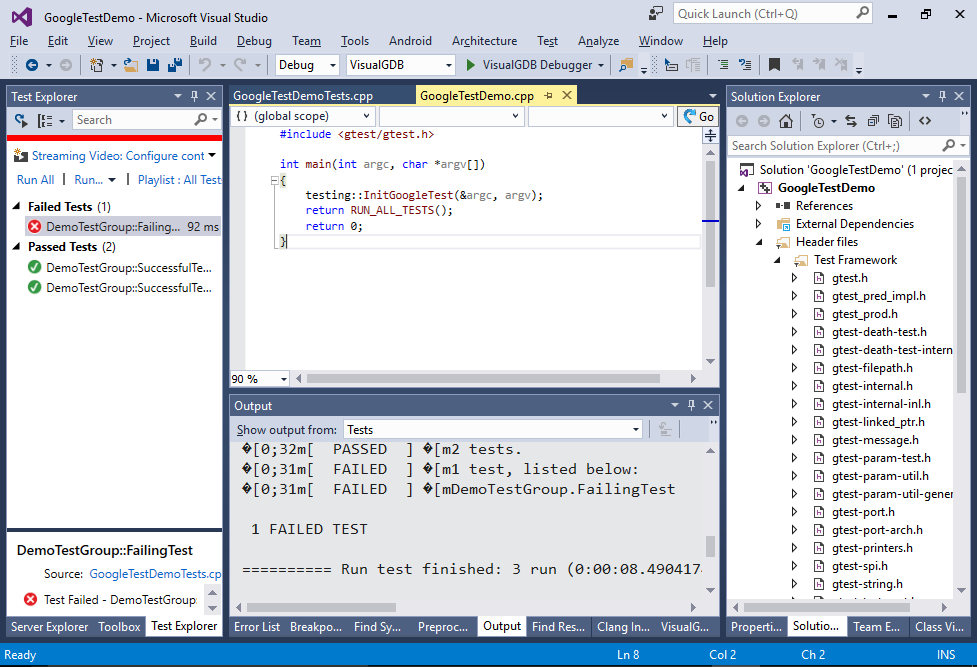
- Now we will show how to use the most common GoogleTest macros to check for common conditions. Remove the auto-generated tests and put the following contents into the <Project Name>Tests.cpp file:
#include <gtest/gtest.h> #include <stdio.h> bool IsWordAligned(void *addr) { return (((unsigned long)addr) & 0x3) == 0; } TEST(DemoTests, AllocationTest) { char *p = new char[1024]; ASSERT_TRUE(p != NULL); ASSERT_PRED1(IsWordAligned, p); delete[] p; ASSERT_THROW(p = new char[2 * 1024 * 1024 * 1024], std::bad_alloc); }
The code above shows 3 different assertion macros:
- ASSERT_TRUE() is used to quickly check that a condition is true. Note that ASSERT_NE() will not work with NULL due to limitations of GoogleTest.
- ASSERT_PRED1() is used to check the value with a custom check function (a.k.a. predicate)
- ASSERT_THROW() is used to verify that the checked expression throws an exception (we check that trying to allocate too many bytes results in a std::bad_alloc)
- Build the project and run the test. Ensure that it passes:
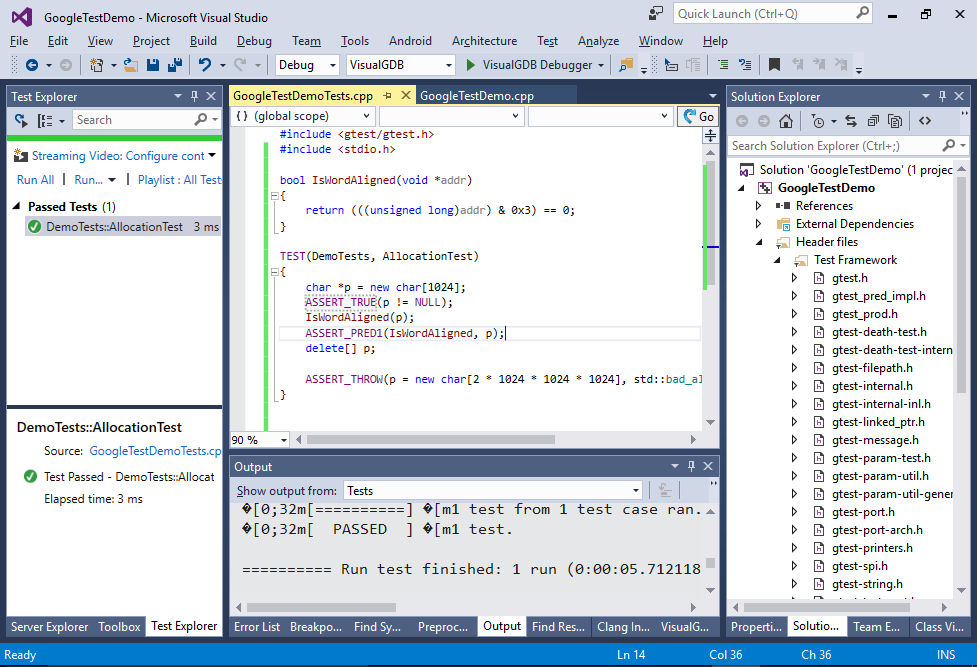
- Now we will provide a custom implementation of the new() operator that will simply call malloc() and will see if the our test can catch this:
void * operator new(size_t size) { return malloc(size); }
- Run the test and see how the test report provides a detailed message on what went wrong:
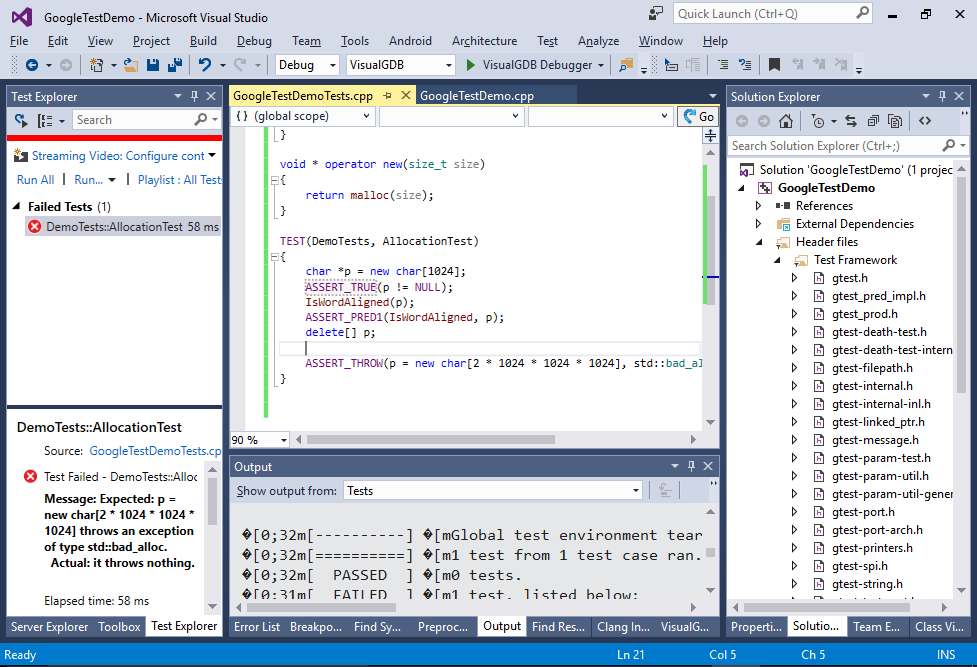
- Now we will cause the IsWordAligned() check to fail by adding 1 to the allocated pointer:
ASSERT_PRED1(IsWordAligned, p + 1);
- Note how the test now fails, but the shown message is not very informative. You could improve its readability by changing IsWordAligned() to return testing::AssertionResult with some additional information instead of just bool:
testing::AssertionResult IsWordAligned(void *addr) { if ((((unsigned long)addr) & 0x3) == 0) return testing::AssertionSuccess(); else return testing::AssertionFailure() << addr << " is not word-aligned"; }
Change the line calling IsWordAligned() as follows:
ASSERT_TRUE(IsWordAligned(p + 1));
- The error message will now be more meaningful and will show the mismatched value:
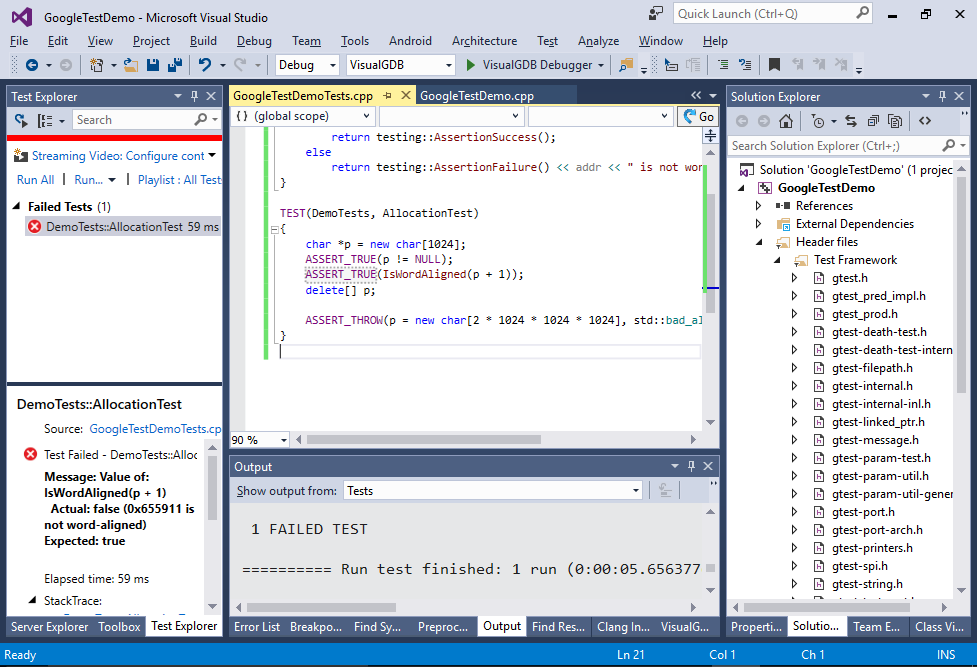
- Now we will show how to use test fixtures to define initialization and cleanup code shared between several tests. Start with defining the following class:
class RNGTests : public::testing::Test { protected: virtual void SetUp() override { srand(123); } };
- Then define a basic test that will check the first value returned by rand():
TEST_F(RNGTests, BasicTest) { ASSERT_EQ(rand(), 128959393); }
Note that we used TEST_F() instead of just TEST() to declare the test. This will ensure that the RNGTests::SetUp() will be called before the test and RNGTests::TearDown() will be called after the test.
- Run the test and ensure it passes:
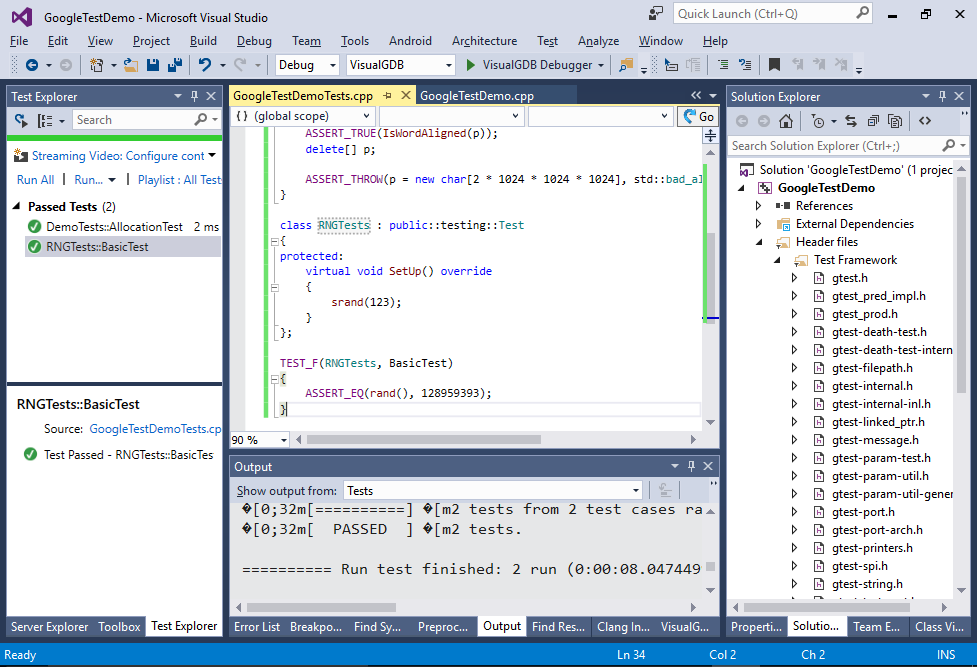 The value returned by rand() may not match the one shown here, as different implementations of rand() may work differently. If this happens, edit the test accordingly.
The value returned by rand() may not match the one shown here, as different implementations of rand() may work differently. If this happens, edit the test accordingly. - You can use the Debug Tests command to quickly verify that srand() actually gets called:
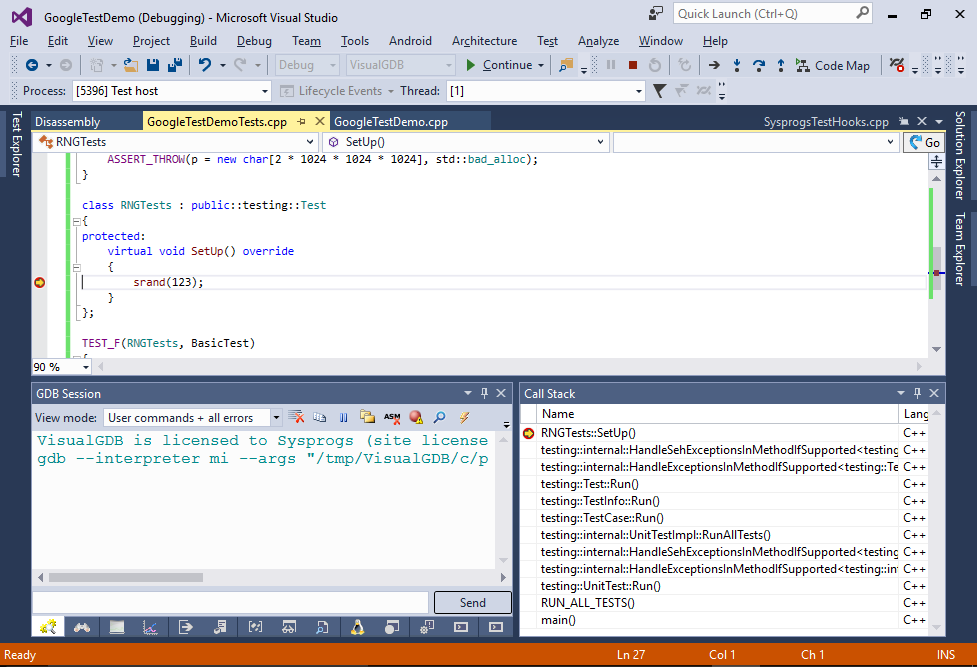
- To understand how exactly GoogleTest handles the fixtures, you can right-click on the line defining your test and select “Preprocess Selected Lines”. VisualGDB will show that defining a test with TEST_F() simply defines a class derived from your fixture class:
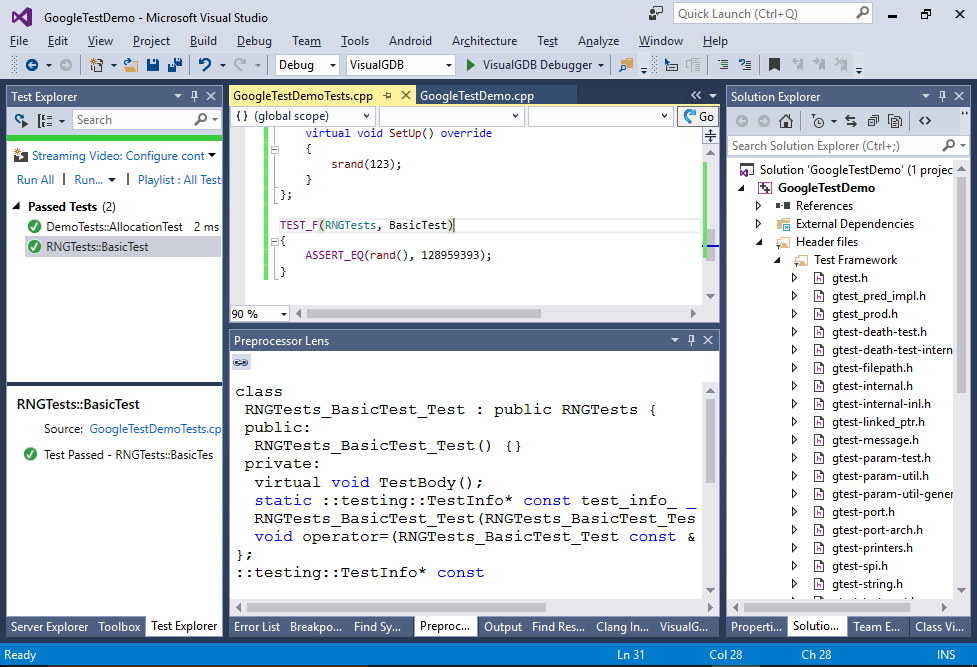
- If you are not using C++11 or later, you may encounter strange IntelliSense errors:
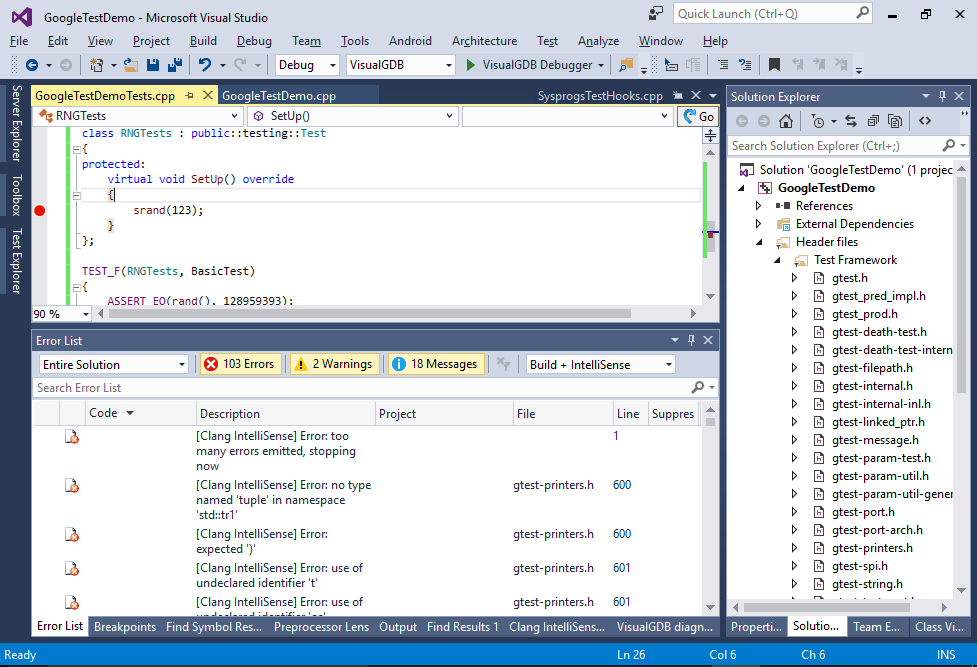
- The easiest way to fix those is to switch the language standard to C++11 or later:
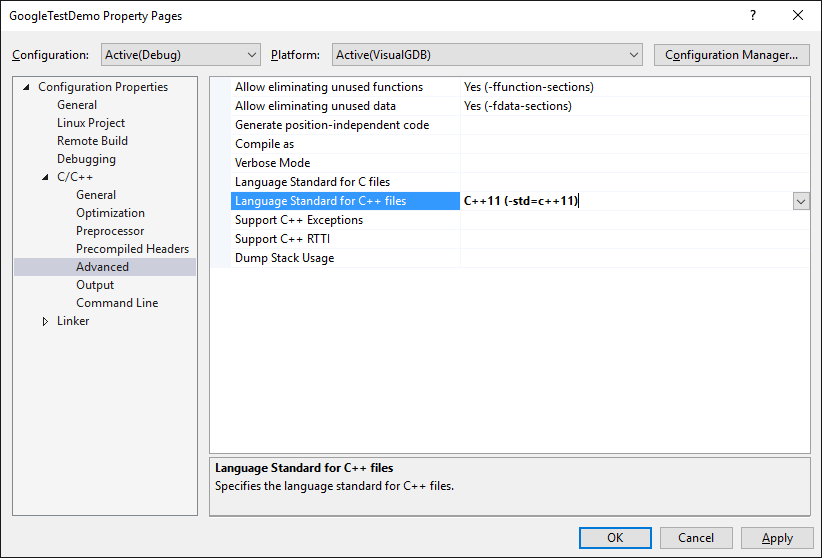
You can read more about the advanced features of the GoogleTest framework here or look through this tutorial to see how to use VisualGDB with CppUTest.

